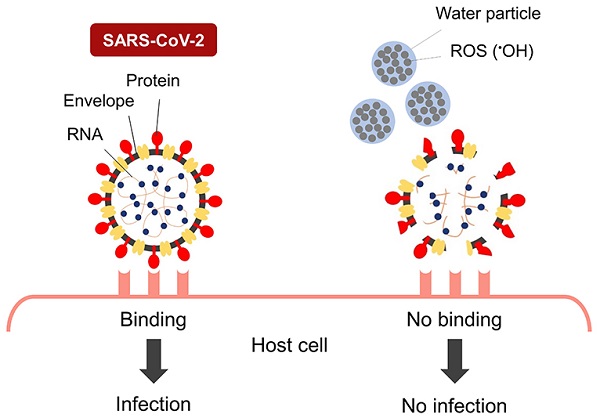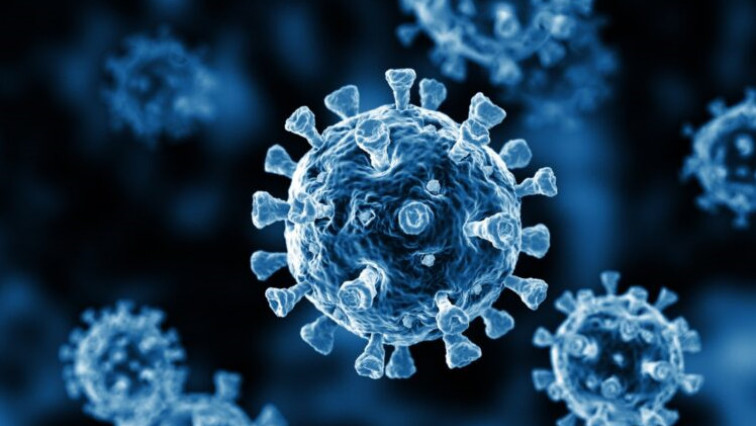In their previous research, Associate Professor Yasugi’s team showed that nano-sized electrostatic atomized water particles disinfect SARS-CoV-2, but the mechanism remained a mystery. Their new paper published in the Journal of Nanoparticle Research describes the damage they observed when SARS-CoV-2 was exposed to the nano-sized electrostatic atomized water particles.

When the envelope, protein, and RNA of SARS-CoV-2 are damaged by nano-sized electrostatic atomized water particles, the virus is unable to bind to host cells.
The researchers showed the atomized water particles decreased the infectivity of SARS-CoV-2 to cells while observing the damage to the virus. “We observed that the nano-sized electrostatic atomized water particles damaged the viral envelope, protein, and RNA, making them unable to bind to host cells,” Associate Professor Yasugi explained. “The phenomena we observed are considered the main mechanism by which the nano-sized electrostatic atomized water particles disinfect SARS-CoV-2.We found that the target of the water particles is not the specific viral specific structure or specific proteins. Because the water particles impact viral envelope, protein, and RNA, they may disinfect other enveloped viral species as well.”
Read the original article on Osaka Metropolitan University.







